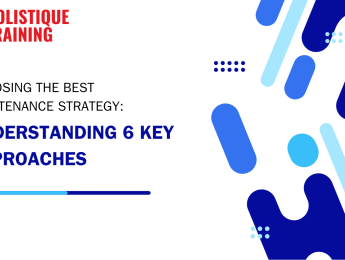- Table of Contents
- Sales vs. Marketing: A Comprehensive Comparison
- Scopes
- Strategies
- Objectives
- Collaboration and Alignment
- How Do the Roles of Sales and Marketing Differ in Business?
- Goals and Objectives
- Timing and Scope
- Personal Interaction
- Tactical Approaches
- Which Is More Important?
- The Impact of Technology on Sales and Marketing
- Automation Tools and CRM Systems
- Data Analytics and Predictive Analytics
- Enhanced Communication Channels
- The Role of Artificial Intelligence (AI) and Machine Learning (ML)
- Challenges and Opportunities in the Tech-Driven Landscape
- The Role of Customer Advocacy in B2B Growth
- Turning Satisfied Customers into Advocates
- Collecting Testimonials and Case Studies
- Referral Programmes
- Community Building
- Measuring and Amplifying Advocacy Impact
- Long-Term Impact on Brand Reputation and Loyalty
- Conclusion
In the realm of business, sales and marketing are two integral functions that drive growth, revenue, and customer engagement. Often used interchangeably, these terms actually represent distinct yet interconnected aspects of a company's overall strategy. Understanding the nuances between sales and marketing is essential for any organisation seeking to maximise its potential in the competitive marketplace.
In this comprehensive comparison, we will delve into the roles and differences between sales and marketing, exploring their unique contributions and clarifying the synergy that exists between them. By the end of this exploration, we aim to shed light on the question: which is more important, sales or marketing?
Sales vs. Marketing: A Comprehensive Comparison
To truly grasp the differences between sales and marketing, delving into their distinct scopes, strategies, and objectives is crucial. Let's explore each of these aspects in greater detail:
Scopes
Sales is primarily concerned with directly exchanging products or services for monetary value. It involves identifying potential customers, understanding their needs, and guiding them towards a purchase decision. The sales process typically includes activities such as prospecting, lead qualification, product demonstrations, negotiations, and closing deals. Sales professionals are skilled at building relationships, overcoming objections, and ensuring customer satisfaction.
In contrast, marketing encompasses a broader set of activities that go beyond direct selling. It focuses on creating awareness, generating interest, and nurturing relationships with potential customers. Marketing professionals conduct market research to understand customer preferences through customer data analytics, analyse competitors, and identify target audiences. They develop strategic plans to position the brand effectively, craft compelling messaging, and choose appropriate marketing channels. Marketing efforts also involve creating engaging content, designing impactful advertising campaigns, managing social media presence, and optimising websites for lead generation.
Strategies
Sales strategies involve engaging with potential customers personally to guide them through the buying process. Sales teams leverage their product knowledge, persuasive skills, and relationship-building abilities to address customer pain points and position their offerings as the best solutions. They build trust, provide personalised support, and ultimately close deals. Sales strategies also involve post-sale activities, such as upselling, cross-selling, and fostering long-term customer loyalty.
On the other hand, marketing strategies aim to create a favourable environment for sales. Marketers develop comprehensive plans that align with business goals and target specific customer segments. They employ a mix of tactics to increase brand visibility, generate leads, and nurture customer relationships. Marketing strategies may include content marketing, social media campaigns, search engine optimisation (SEO), email marketing, events, partnerships, and public relations. The objective is to create a cohesive brand experience across various touchpoints, spark interest in the target audience, and drive them towards making a purchase.
Objectives
The primary objective of sales is to generate revenue and meet or exceed specific targets. Sales professionals are measured based on key performance indicators (KPIs) such as the number of sales closed, average deal size, conversion rates, and customer retention. They aim to maximise profitability by efficiently converting prospects into paying customers and ensuring customer satisfaction. Sales objectives are often short-term and focus on immediate financial results.
Marketing objectives, on the other hand, are more multifaceted and long-term in nature. While generating revenue is also crucial, marketing strategies often emphasise creating brand awareness, positioning the brand in the market, and building customer relationships. Marketers track metrics like website traffic, social media engagement, lead generation, brand sentiment, and customer lifetime value. The ultimate goal is establishing a strong brand presence, fostering customer loyalty, and driving sustainable business growth over time.
Collaboration and Alignment
While sales and marketing have distinct roles, both functions must collaborate and align their efforts. Close collaboration allows for a seamless transition from marketing-generated leads to the sales team, ensuring a smooth and effective conversion process. Marketing can provide valuable insights into customer preferences, market trends, and competitor analysis to help sales professionals tailor their approaches. Similarly, sales teams can share valuable customer feedback, objections, and real-world insights with marketing, enabling them to refine messaging, target audience segments, and develop more compelling campaigns.
Alignment between sales and marketing also ensures consistent brand messaging and a unified customer experience. When both functions work towards a common goal and communicate effectively, the entire customer journey becomes more cohesive and impactful. Sales and marketing alignment reduces internal silos, minimises miscommunication, and maximises the overall effectiveness of the organisation's growth strategy.
How Do the Roles of Sales and Marketing Differ in Business?
While sales and marketing are distinct functions, they are intricately intertwined, each playing a vital role in the overall success of a business. Let's explore the unique contributions of each:
Goals and Objectives
Sales teams primarily focus on achieving revenue targets and closing deals. Their success is often measured by metrics such as the number of sales, average deal size, and conversion rates. Conversely, marketing teams strive to create brand awareness, generate leads, and nurture customer relationships. They track metrics like website traffic, social media engagement, and lead conversion rates.
Timing and Scope
Sales activities usually occur in the latter stages of the customer journey, where prospects are in the consideration or decision-making phase. The sales team engages with qualified leads, addresses their needs, and guides them towards purchasing. In contrast, marketing activities encompass the entire customer journey, from initial awareness to post-purchase support. Marketers cast a wide net to attract potential customers, create interest, and cultivate brand loyalty.
Personal Interaction
Sales professionals engage in direct, one-on-one interactions with prospects and customers. They listen to their pain points, present tailored solutions, and address concerns, building relationships and instilling trust along the way. Marketers, however, often communicate with a broader audience through mass media, online advertising, content marketing, and other promotional channels. They aim to create demand and pique interest among a larger group of potential customers.
Tactical Approaches
Sales tactics typically involve personalised selling, product demonstrations, negotiations, and relationship-building. Sales professionals focus on understanding customer needs and positioning their offerings as the best solutions. In contrast, marketing employs various tactics, including market research, branding, advertising campaigns, content creation, email marketing, and social media strategies. They aim to engage with customers on a broader scale and generate qualified leads for the sales team.
Which Is More Important?
When it comes to determining whether sales or marketing is more important, it is crucial to recognise that they are both integral components of a successful business strategy. While their objectives and approaches differ, they share a common goal: driving revenue and business growth.
Sales teams are the front line of revenue generation, directly responsible for closing deals and generating immediate revenue. Their role is critical in driving short-term financial success and meeting specific targets. However, sales efforts alone may not be sustainable in the long run without effective marketing support. Marketing activities create brand awareness, generate leads, and cultivate relationships, providing a steady stream of prospects for the sales team to convert into customers.
Moreover, marketing plays a vital role in building a strong brand image and reputation, ultimately increasing customer trust and loyalty. An effective marketing strategy enhances a business's visibility and credibility, setting the stage for successful sales interactions.
Rather than viewing sales and marketing as competing entities, businesses should recognise the symbiotic relationship between the two. An integrated approach, where sales and marketing work hand in hand, yields the best results. Collaborative efforts ensure that marketing generates high-quality leads and equips the sales team with the tools, content, and insights needed to close deals effectively.
The Impact of Technology on Sales and Marketing
In the rapidly evolving landscape of sales and marketing, technology integration has emerged as a transformative force, reshaping traditional approaches and enhancing the efficiency of both functions. Let’s delve into how technology has impacted sales and marketing, revolutionising their strategies and enabling a more data-driven and customer-centric approach.
Automation Tools and CRM Systems
One significant technological advancement influencing sales and marketing is the proliferation of automation tools and Customer Relationship Management (CRM) systems. Automation tools streamline repetitive tasks, allowing sales and marketing teams to focus on high-value activities. CRM systems, on the other hand, provide a centralised platform for managing customer interactions and data. This integration enhances collaboration between sales and marketing by providing a unified view of customer interactions, enabling personalised communication, and facilitating more informed decision-making.
Technology | Impact on Sales | Impact on Marketing |
Automation Tools | Streamlining repetitive tasks, improving efficiency | Enhancing lead nurturing, personalised communication |
CRM Systems | Centralised customer data, improved collaboration | Unified view of customer interactions, data-driven decision-making |
Data Analytics | Predictive analytics for sales forecasting | Targeted campaigns, personalised content, real-time performance tracking |
Table 1: Key Technologies and Their Impact on Sales and Marketing
Data Analytics and Predictive Analytics
The advent of data analytics has revolutionised how businesses approach decision-making. Data analytics provides valuable insights into customer behaviour, preferences, and trends in sales. Sales teams can leverage predictive analytics for sales forecasting, identifying potential leads, and understanding the likelihood of closing deals. On the marketing front, data analytics enables a more targeted approach. Marketers can analyse customer data to create personalised campaigns, optimise marketing strategies, and measure the effectiveness of their initiatives in real-time.
Enhanced Communication Channels
Technology has expanded the array of communication channels available to both sales and marketing teams. The rise of social media platforms, email marketing tools, and messaging apps has provided new avenues to engage with prospects and customers. Sales professionals can utilise these platforms for direct communication, relationship-building, and real-time interactions. On the other hand, marketers leverage these channels to disseminate content, run targeted campaigns, and foster community engagement.
The Role of Artificial Intelligence (AI) and Machine Learning (ML)
Artificial Intelligence (AI) and Machine Learning (ML) have emerged as game-changers in sales and marketing. AI-powered chatbots can handle routine customer queries in sales, freeing up sales teams to focus on more complex interactions. Machine learning algorithms can analyse vast amounts of data to identify patterns and predict customer behaviour, aiding in more personalised and effective marketing campaigns. Integrating AI and ML enhances efficiency and allows for a more proactive and adaptive approach in both sales and marketing strategies.
Challenges and Opportunities in the Tech-Driven Landscape
While technology brings unprecedented opportunities, it also challenges organisations must navigate. The increasing reliance on data raises concerns about privacy and security, requiring robust measures to safeguard customer information. Additionally, the rapid pace of technological advancements necessitates continuous learning and adaptation by sales and marketing professionals to stay ahead of the curve.
In summary, the impact of technology on sales and marketing is profound and far-reaching. Automation tools, CRM systems, data analytics, enhanced communication channels, and AI and ML integration have reshaped how businesses engage with customers. Embracing these technological advancements enhances efficiency and empowers organisations to deliver more personalised and targeted experiences, driving success in the digital era of sales and marketing. As technology evolves, staying attuned to emerging trends will be crucial for organisations seeking to maintain a competitive edge in the dynamic business landscape.
The Role of Customer Advocacy in B2B Growth
In the intricate realm of B2B growth, the significance of customer advocacy cannot be overstated. This section delves into the pivotal role that satisfied customers play in driving business success, exploring strategies employed by both sales and marketing teams to transform satisfied clients into enthusiastic advocates. From collecting testimonials to creating referral programmes, businesses can leverage customer advocacy as a potent tool for organic growth.
Turning Satisfied Customers into Advocates
Customer advocacy is a powerful force that extends beyond mere satisfaction. Satisfied customers become advocates when promoting a brand, sharing positive experiences, and influencing others in their network. Both sales and marketing teams play key roles in nurturing this advocacy, recognising that enthusiastic endorsements from existing clients can significantly impact brand reputation and influence potential buyers.
Collecting Testimonials and Case Studies
One effective strategy marketing teams employ to harness customer advocacy is the collection of testimonials and case studies. Testimonials provide firsthand accounts of positive experiences, offering a genuine and compelling narrative that resonates with potential clients. Case studies delve deeper, showcasing a client's specific challenges and how the product or service provided a successful solution. These materials are valuable assets in marketing collateral, reinforcing credibility and trust.
Referral Programmes
Referral programmes are mutually beneficial strategies that involve both sales and marketing teams. The sales team identifies opportunities for referrals during personalised client interactions, leveraging their existing networks. The marketing team plays a pivotal role in designing and promoting these programmes, often providing incentives to both the referring client and the new customer. Referral programmes drive organic growth and strengthen relationships by showcasing the trust existing clients place in the brand.
Community Building
Building a sense of community among clients is a strategy that transcends traditional sales and marketing boundaries. The sales team focuses on personalising interactions, understanding client needs, and fostering knowledge-sharing among clients. Creating online forums, social media groups, and events facilitates community building on the marketing front, providing clients with platforms to share insights, best practices, and success stories. This collaborative environment enhances customer satisfaction and creates a network of advocates who actively promote the brand.
Measuring and Amplifying Advocacy Impact
Sales and marketing teams must continually measure the impact of customer advocacy initiatives to refine their strategies. Metrics such as the number of referrals generated, the conversion rate of referred leads, and the engagement within client communities provide valuable insights. Amplifying the impact involves showcasing these advocacy efforts through various channels, such as social media, company newsletters, and industry events, further enhancing the brand's reputation and credibility.
Long-Term Impact on Brand Reputation and Loyalty
When strategically cultivated, customer advocacy has a profound long-term impact on brand reputation and customer loyalty. Satisfied customers turned advocates contribute to immediate growth through referrals and become loyal supporters of the brand. Their positive experiences and endorsements create a ripple effect, influencing a wider audience and contributing to sustained business success.
In short, customer advocacy in B2B growth is multifaceted and requires collaborative efforts from both sales and marketing teams. By engaging in personalised interactions, collecting testimonials and case studies, fostering community building, and implementing referral programmes, businesses can cultivate a network of satisfied customers who actively advocate for the brand. Recognising the long-term impact on brand reputation and loyalty, organisations that prioritise and invest in customer advocacy initiatives position themselves for sustainable success in the competitive landscape of B2B growth.
Conclusion
In conclusion, while sales and marketing have distinct roles and objectives, they are both indispensable components of a thriving business. Sales teams focus on generating immediate revenue by closing deals, while marketing creates brand awareness, generates leads, and builds long-term customer relationships. Rather than emphasising one over the other, businesses should foster collaboration and alignment between sales and marketing for optimal outcomes. By leveraging the unique strengths of each function, organisations can create a powerful synergy that drives sustained growth and business success.
If you want to gain comprehensive knowledge and practical skills in business-to-business marketing, consider enrolling in our course, ‘Mastering Business to Business Marketing,’ to propel your growth strategy to new heights.
























